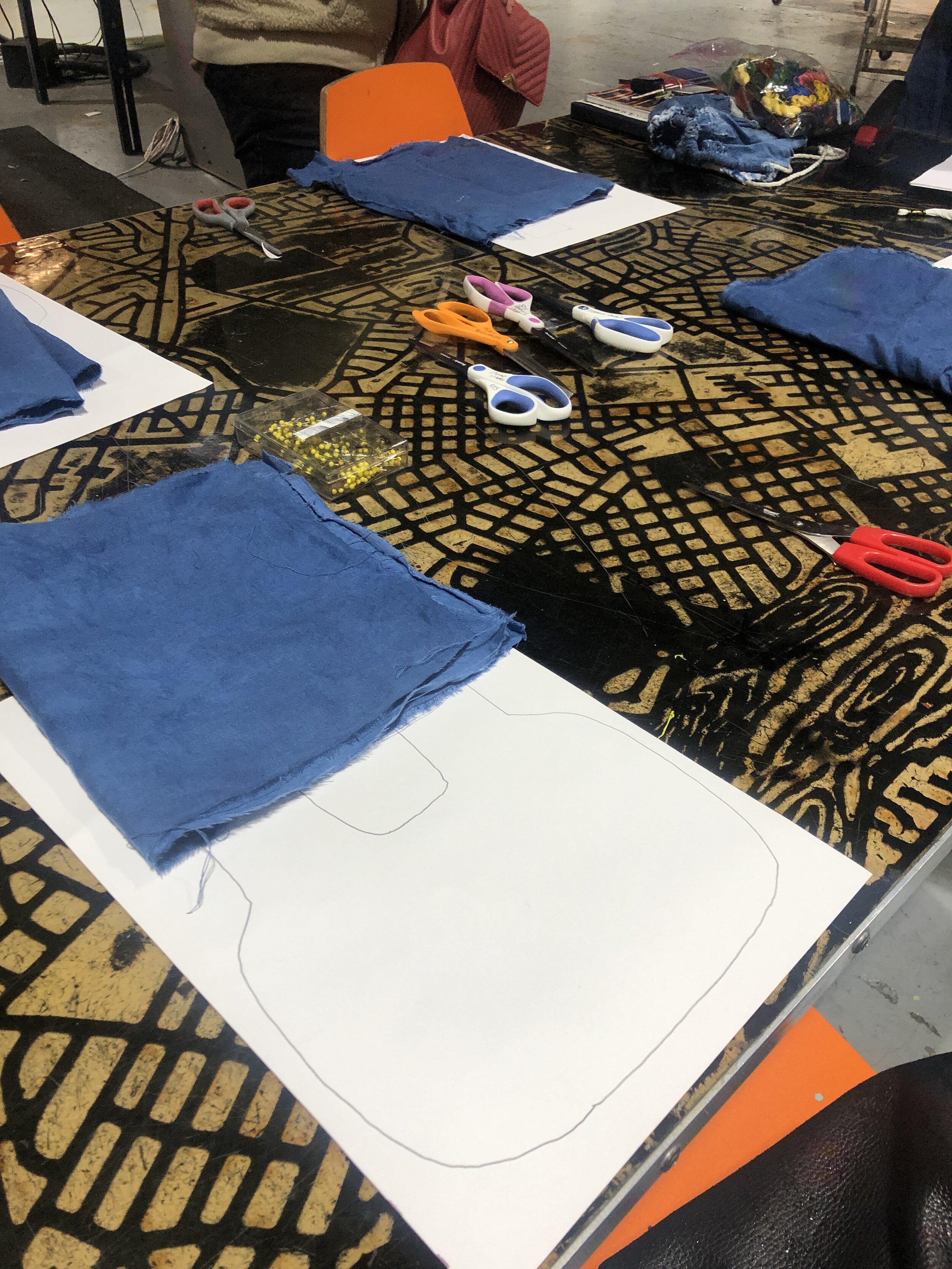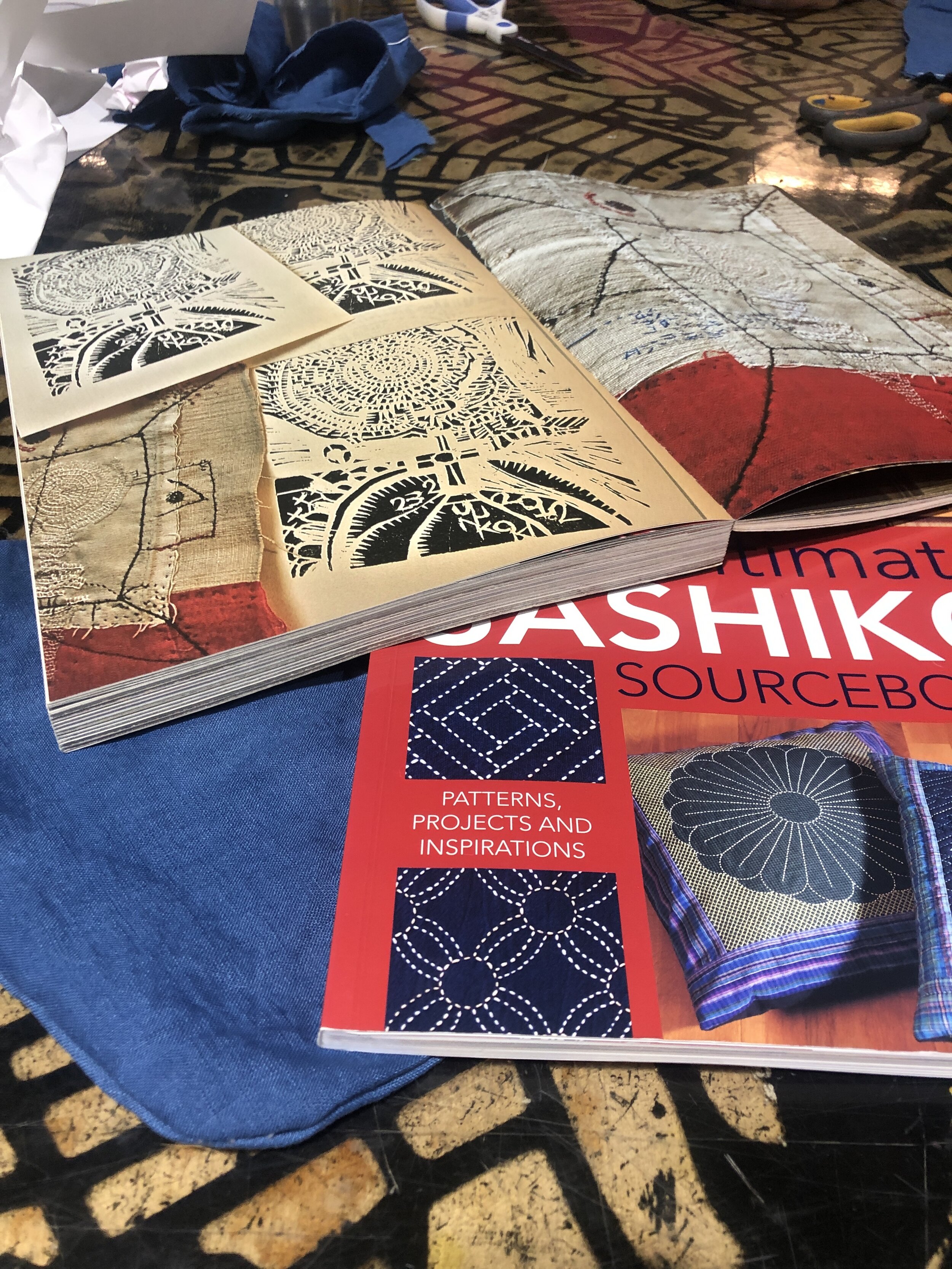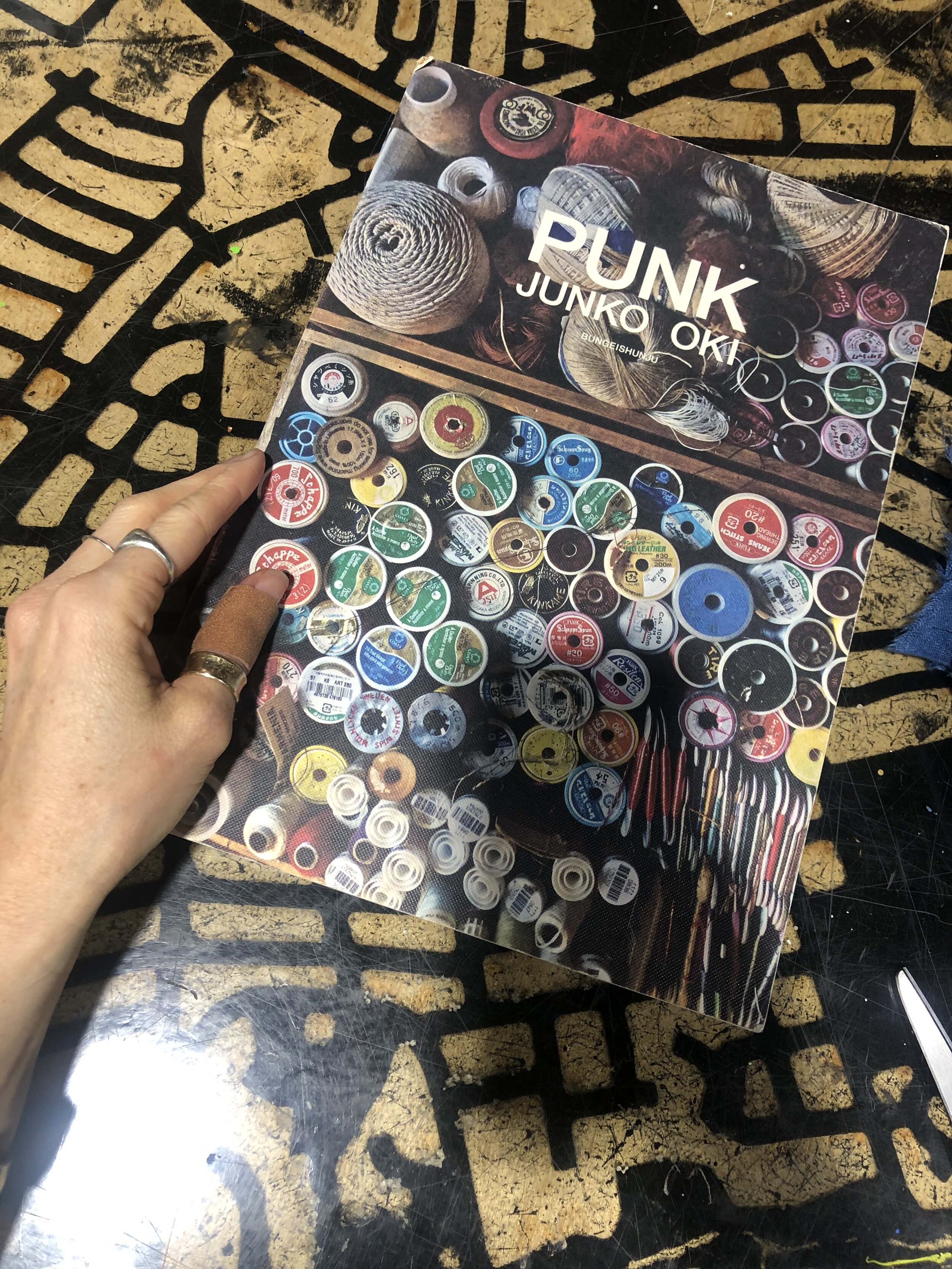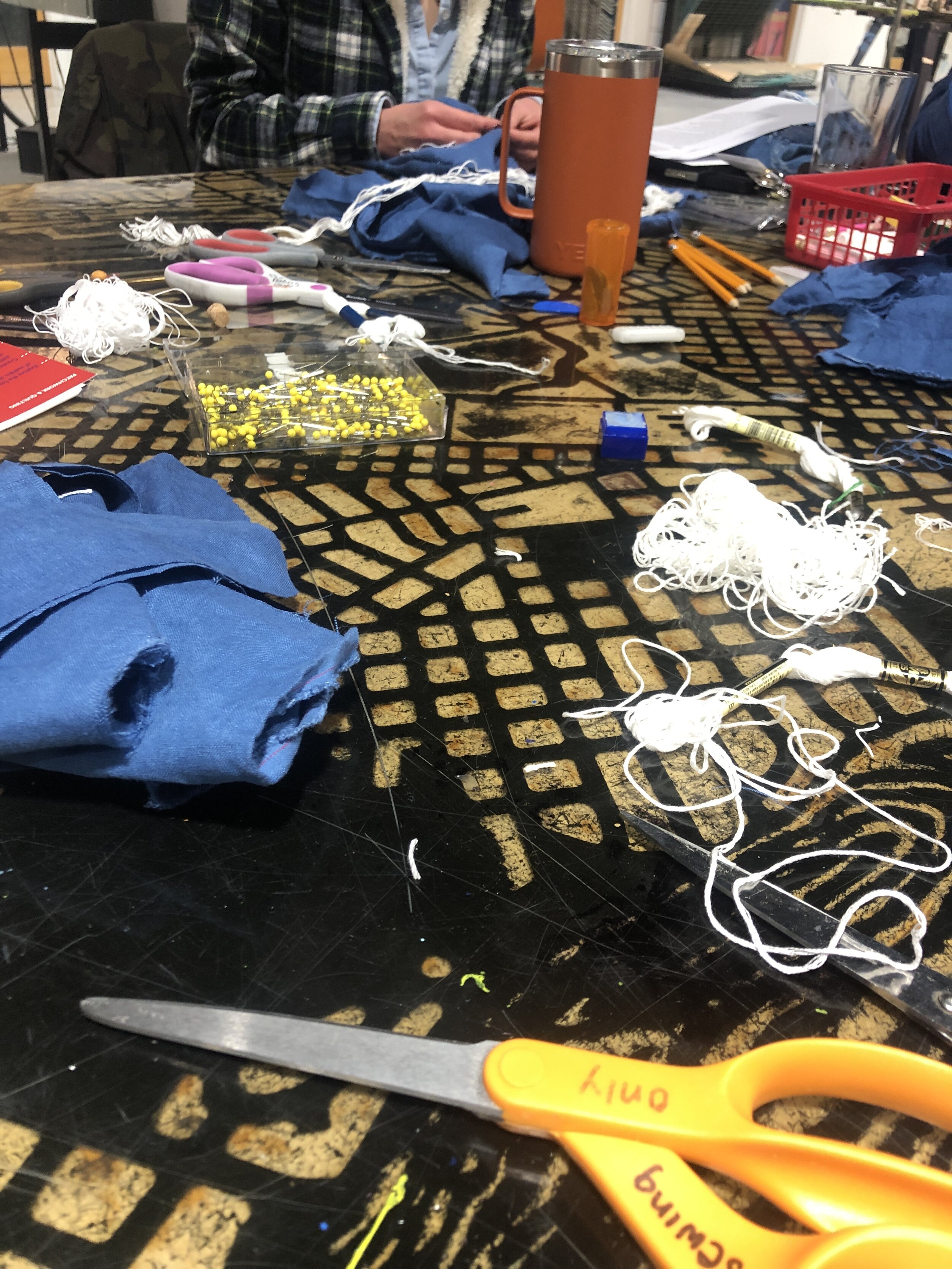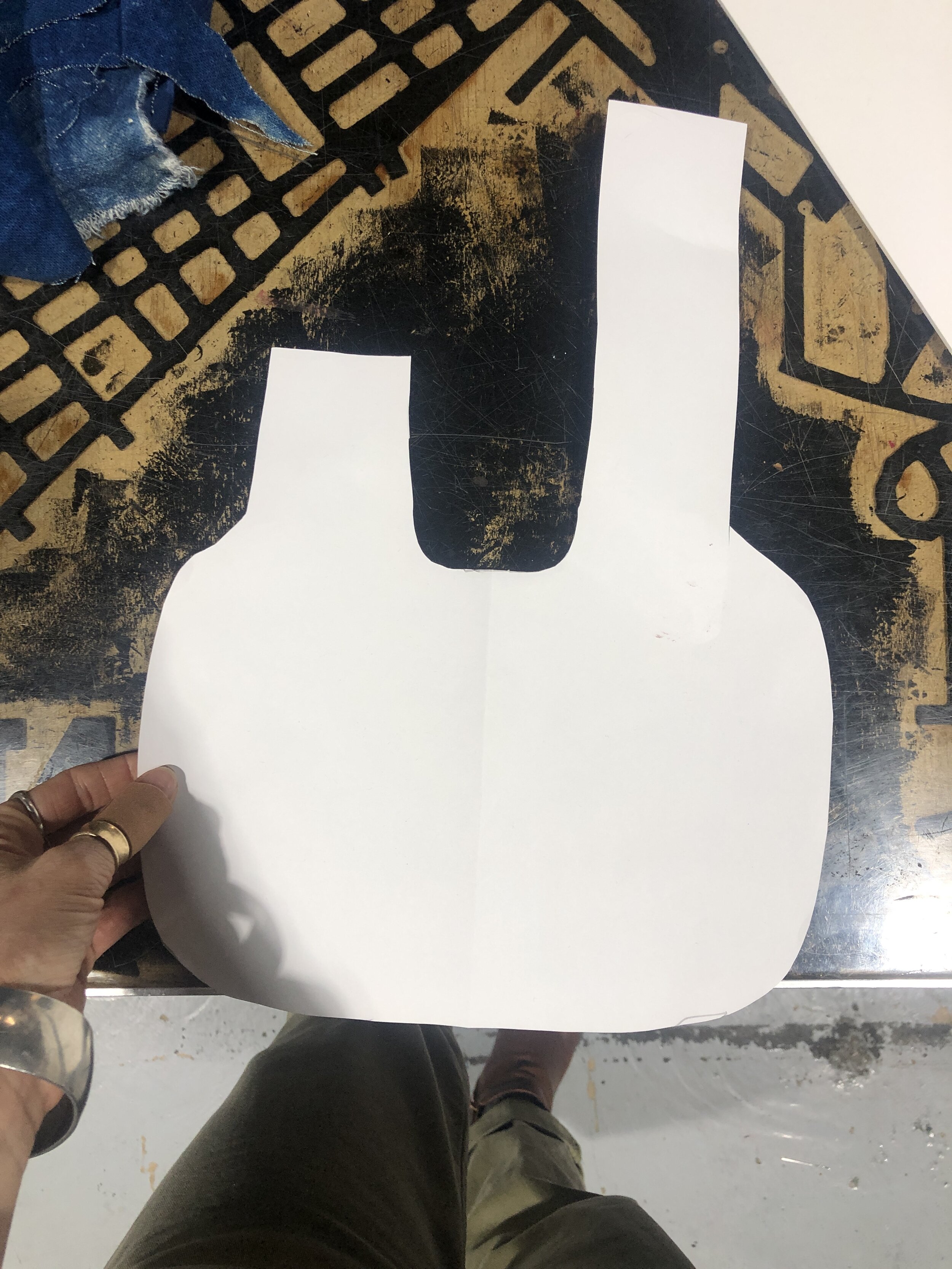One New Thing #5 Japanese Knot Bag with Sashiko Stitching
One New Thing #: 5
What: Japanese Knot Bag with Sashiko Stitching - Workshop
Where: Studio Two Three, Richmond, VA
Cost: $50 + eventbrite fees
Fave thing: Learning the history behind the little stitches - especially that Sashiko means “little stabs” - I learned that first hand!
On a dark and rainy Wednesday night, I found myself at Studio Two Three, a nonprofit art space in Richmond, VA that “gives people the space, the tools, and the education to find that thing they love and make it.
I was here for a workshop called: Japanese Knot Bag with Sashiko Stitching. I had no idea what that meant exactly, but I went to a Shibori Indigo Dyeing workshop with Miranda of Live Free Creative Co. and and had one of the best times EVER making something, had the time of my life, I figured this would also be pretty fun -or at the very least a new experience.
I will make a quick disclaimer here. I am NOT a DIY person - at ALL. I’m not an artist, I don’t really like crafts, and the most I’ve really ever done is make vision boards. I’m not saying I’m not creative (because trust me I am!) it just doesn’t usually come out via my hands in the tactile, artist sense.
This was the very first ONT workshop that I signed up for back in December - when I shared the story on Instagram, E’Beth Goad, a personal stylist in The Founders Club wrote back to say how awesome these bags are - she used to live in Japan and they were often used to carry watermelons to a host’s house when visiting -watermelons are very expensive there, so it made a great hostess gift!
Not really knowing what to expect, imagine my surprise when I found out not only were we going to learn the stitching - we were going to sew an actual bag as the first step! Patterns were laid out before us along with scissors, two scraps of indigo-dyed linen, along with pins and very specific needles used in Sashiko stitching (you can also use doll needles - basically they are really long needles, so you can get a lot of stitches in (called “loading up the needle”) before pushing it through.
But first, our instructor, Elizabeth Cogar gave us a really detailed history of what we were about to do. (Also, check out her latest project: Really Richmond - A City Guide!).
The short of it all - many thanks to Elizabeth for doing this research!
Boro is the textile that has been reinforced with patches made out of rags and scraps - the stitching to keep it all together is sashiko.
Boro came about during the 1600-1868 when poorer people didn’t have access to new fabric, so they preserved what they had b repairing it with scraps
Sashiko is typically done on indigo fabric with white thread in straight lines or with cross hatching and decorative sashiko can also follow precise patterns (think: waves, fans, Xs). Precision and perfection is key for traditional sashiko.
It’s unclear the purpose of these bags - but they have one longer handle and one shorter handle. The long handle goes through the short to create a little wristlet of sorts.
And with the history lesson done, myself and 3 other attendees got down to business! Elizabeth had a sample bag that was super tiny - one attendee opted to re-do her pattern for that size, while the rest of us did a larger bag.
I pinned the pattern to the fabric, cut it out, pinned it back together, and ran some quick running stitches around the top handles of the bag and around the bag portion. Then it was time to turn it inside out and get to some sashiko!
It took about 45 minutes to get the lines done as you see in the video - a lot longer than I thought! For those wanting to try this, but who prefer to go a little more rogue over the historically correct method (white stitches on indigo fabric), you can opt for different colored thread and more abstract patterns.
For more of these designs, check out the book Punk by Junko Oni.
I loved the most about the workshop was learning this cool aspect of history and the people’s lives who used this, seeing the really creative patterns the other attendees were drawn to, and getting to use my hands to make something. As someone who spends a LOT of time typing away on a computer, I don’t often have the chance to get hands on!
Photo credit: Elizabeth Cogar
While my Japanese knot bag isn’t big enough for a watermelon - it’s the perfect size for me to store my sock darning supplies.

